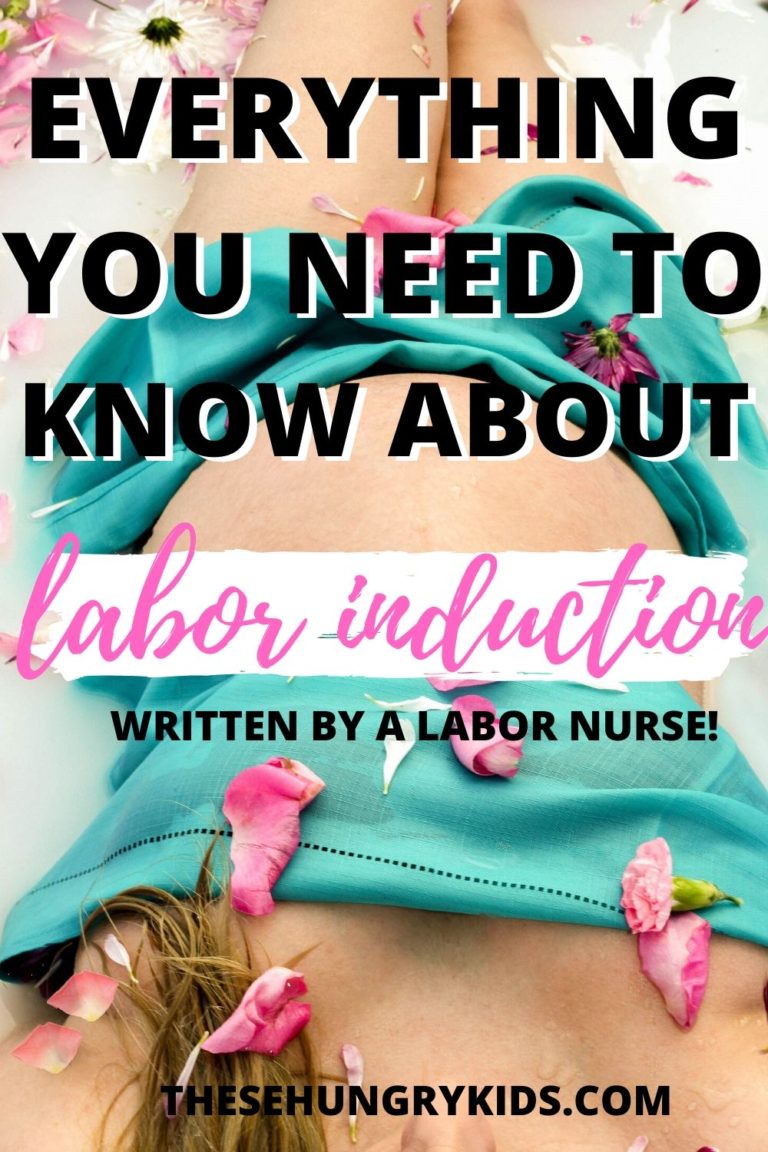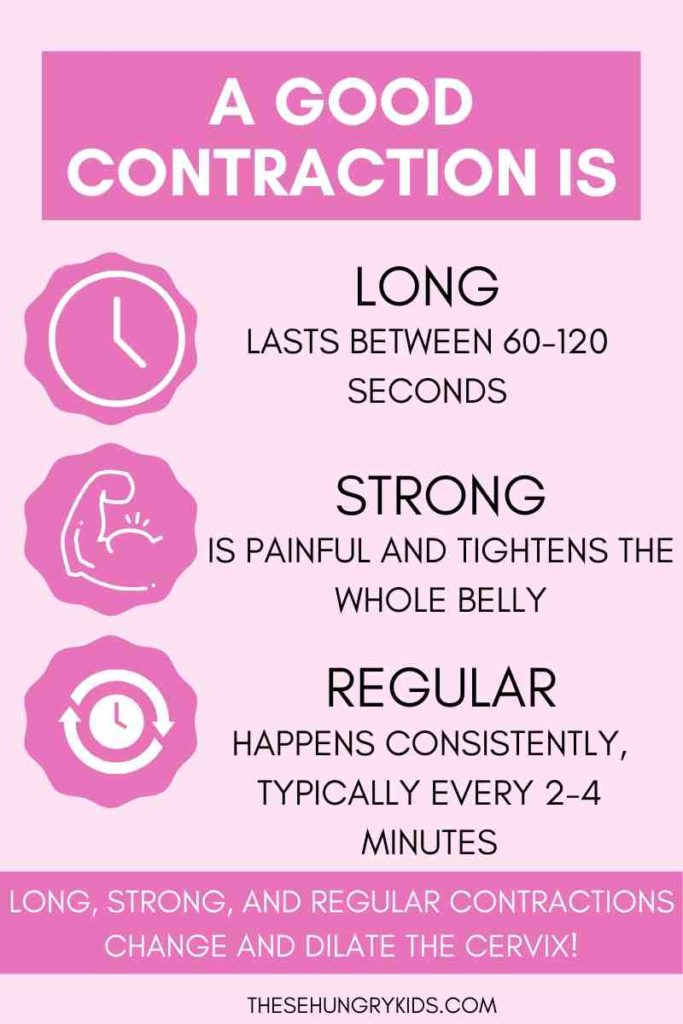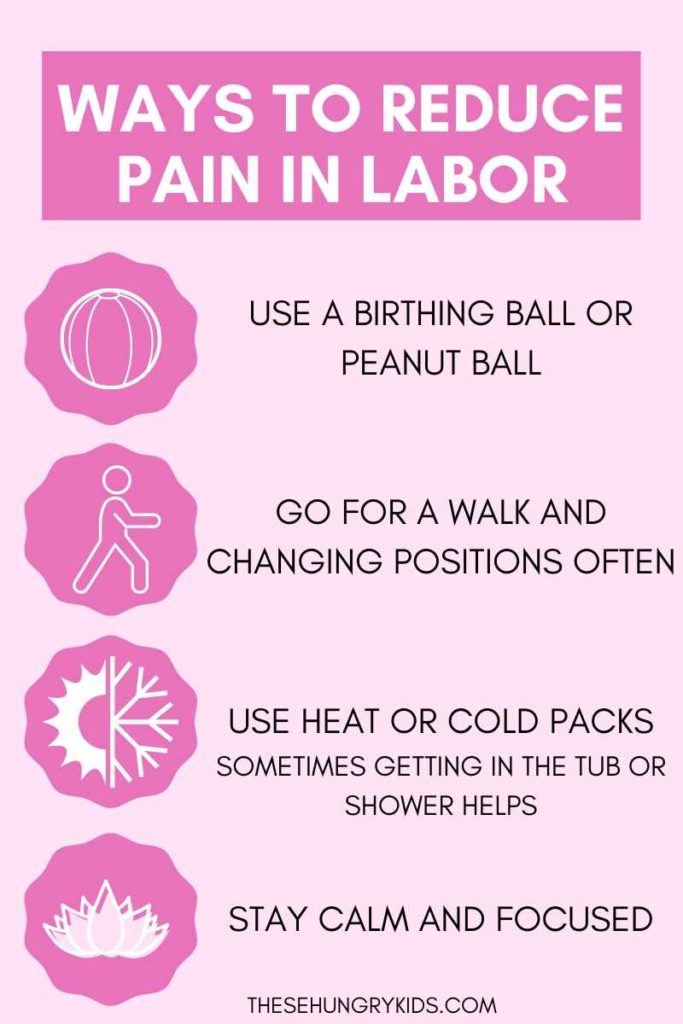Preparing for your labor induction is the smart thing to do. Here is everything you need to know about the labor induction process, methods, and the most commonly asked questions!
If your doctor has mentioned inducing labor to you, your head is probably spinning with questions.
What are labor induction medications? How long does it take to induce labor? Does induction hurt more than natural labor?!
Let’s chat, mama. I’m not only a labor and delivery nurse, but I’ve also had three successful inductions. I can hopefully help ease your mind and give you some good, reliable info.
Prepare For Your Labor Induction
The best way you can prepare for your labor induction is by asking a lot of questions and educating yourself about the whole process.
I highly recommend you take a birth course, and I’m partial to the BirthSmarts online course. There is loads of information about labor inductions, advocating for yourself, pain management options, and more.
Facts about labor inductions
There are many misconceptions about inducing labor.
Try to block out the stories of your hairdresser’s best friend’s dog walker’s cousin who had a 78 hour induction that ended in a c-section. Or your Aunt’s BFF that says inductions aren’t safe, and the doctors are just trying to control you with Big Pharma or some shenanigans.
I’ve heard many women say that “induction lead to c-sections” or that “being induced means the doctor controls your birth.”
This simply isn’t true. While being induced is different than letting your body go into labor on its own, it is generally very safe and is often successful. And while there is some evidence that suggests when one intervention is done, more are to follow, that doesn’t mean you can’t have a vaginal birth.
In fact, the study cited here suggests a LOWER rate of c-section in moms who are induced at 39 weeks versus moms who went into labor spontaneously.

DISCLAIMER: My mission is to prepare and inform, not advise. There is no place for shame or guilt in labor – you are entitled to give birth however you see fit. Pain meds, no pain meds, vaginal or c-section, you rock it, mama! The information in this post is purely for entertainment and is not meant to replace the advice of a medical professional. I always adhere to HIPPAA policies, any similarities to yours or anyone else’s story is purely coincidental. Please see my disclosure policy for more information. This post contains affiliate links, meaning I may earn a small commission at no additional cost to you if a purchase is made using the links. This helps fund this site, and keeps These Hungry Kids up and running. Thank you!
Note: you may want to have this post open while you read – it’s a dictionary of commonly used labor words so you don’t get confused.
Reasons your provider will induce labor
There are many reasons an induction may be necessary. Usually, they are recommended when either the baby or mom is at risk if the pregnancy continues.
Some of the reasons for labor inductions include:
- High blood pressure
- Pre-eclampsia
- Infection
- Gestational or pre-existing diabetes
- Cholestasis
- Placental failure
- The baby is not looking great on fetal heart tracings, or there is a significant lack of movement
- You are over 41 weeks pregnant and there are signs the placenta is aging
- Your water has been broken for a long time and labor has not started yet (risk for infection)
- You have very low or very high amniotic fluid
- The baby’s growth has stalled

When will a doctor induce labor?
A doctor will induce labor if it is necessary to keep mom, baby, or both safe.
Labor inductions typically take place between 37 and 41 weeks, though there are reasons they can be scheduled earlier or later.
You should always have a conversation with your doctor or midwife about why they are recommending the induction, and if it is necessary.
The best time for elective labor induction
Some people also choose to have elective inductions. This means that you requested to be induced and worked with your provider to make a plan to induce labor on a certain date for reasons that are not medically necessary.
As a general rule,you should not induce labor unless medically necessary before 39 weeks gestation.
People often choose to have an elective induction they have family coming into town to assist, difficult social situations, or if they are very uncomfortable with the pregnancy and want to be done with it.
Many hospitals limit elective inductions, or are more likely to “bump” elective inductions to another day.
Simply put: an elective induction does not trump a bed space for a mom that is laboring or a mom that needs to be induced for medical reasons. This is something that varies greatly from facility to facility, but it’s just something to keep in mind when scheduling your induction.

How long does it take to induce labor?
Inducing labor can take anywhere from several hours to several days.
This may shock you, but for first time moms it usually takes a few days to induce labor.
I always cringe when a mom says, “I picked this day for my induction because it’s my grandma’s birthday and the baby is named after her!”
Inductions can literally last 3-4 days and that is totally normal! With that being said, inductions can also last a few hours. It all depends on how ready your body is for labor at the start of the induction process.
Factors that affect the length of induction:
- Recently having a baby (within the past few years)
- Dilation at the start of induction
- Effacement at the start of induction
- Gestational age
Why does labor induction take so long?
The longest part of the induction is getting labor started. Typically, if you are not dilated or effaced much, you will require some cervical ripening.
You may be uncomfortable throughout this process, but you are not actively in labor. Once you are in labor things move much quicker. Cervical ripening, or getting your cervix ready for labor, tends to take the most time during a labor induction. If your cervix is already thinning and softening, induction is usually faster.
Many of the medications used for cervical ripening can only be given every 4, 6 or 12 hours.
Example: Let’s say your doctor wants to start the induction with prostaglandins, and you want to know how long does cytotec take to induce labor.
So if you require 4 doses of oral misoprostol (cytotec) for cervical ripening, which is typically given every 4 hours, you are already 16 hours into the induction process. And let’s say you need to get up to 20 units of pitocin to get into active labor…that could take another 10 hours! And then dilating takes a while! So time really adds up.
Of course there are exceptions to every rule, but typically the longest part of induction is getting the cervix soft and thinned, and then it will begin to dilate faster. The thinning and softening of the cervix is called effacement.
Once labor is started, you can try one of these ways to speed up labor.

Labor induction process
The medications and procedures used for labor induction depend on the physician or midwife doing your delivery. The types of medications and procedures used are similar across the United States, but your provider may have a preference for which type is used and in what order.
Bishop scores
When you first arrive for your induction, your doctor will figure our your Bishop Score.
This helps guide their decision on which induction methods to use. The Bishop Score factors in your cervix’s position, dilation, effacement, firmness, and the baby’s head in relation to your pelvis. Your provider can discuss your Bishop Score with you to determine the best course for induction.
The labor induction process
After you are admitted to the hospital, your provider will do an assessment and determine your Bishop score. They will then recommend different medications or interventions that can help induce labor.

Medications or Drugs Used To Induce Labor
Prostaglandins to induce labor
Prostaglandins are meant to thin and soften the cervix to get it ready for labor. These are used for cervical ripening, which if you remember from above is the part of induction that often takes the longest but does not usually start active labor.
There are a few different ways that prostaglandins can be administered:
- A gel that is placed on the cervix by a physician (such as dinoprostol, or Prepidil)
- A pill you take by mouth (such as misoprostol, or Cytotec)
- A pill that is inserted into the vagina near the cervix (such as misoprostol, or Cytotec)
- A pessary that is placed by the cervix (such as dinoprostone, or Cervidil)
Typically, your doctor will start with prostaglandins if your cervix is not yet thinned or dilated, or if your cervix is just starting to thin and dilate.
While these medications may start labor, they typically just get your cervix ready for labor. It is not uncommon to receive several doses of these medications without much dilation. The goal is really softening, or effacement.
Fun Fact: Semen contains prostaglandins! It’s one of the reasons that sex is often recommended as a natural way to kick-start labor.
Foley Bulb, or Balloon Induction
This technically isn’t a medication for induction, but it’s a method that is very successful.
This is when the physician places a small catheter into your cervix. A balloon is filled with saline solution at the top of the cervix, placing pressure on it to encourage dilation.
Another balloon may be filled in the vagina to place pressure on the bottom of the cervix as well, though that part is really provider preference.
There will be a tube connected to the balloon that will hang out of your vagina. This usually gets taped to the inside of your leg to put it out of the way, and sometimes it gets taped to tension to increase the pressure on the cervix.
Foley bulbs are often used in conjunction with cervical ripening medications. The nice thing about the foley bulbs is the low risk associated with them! There aren’t any medications on or in the balloon, it’s just stretching the cervix. You are also free to move around and do as you wish while the balloon is in! The foley bulb will not affect the baby.
How to cope with a foley bulb induction
I’ve never had one, but my patients tell me that the first 30 minutes with a foley bulb are very uncomfortable. It’s been described as a lot of cramping and sharp pains, similar to intense period cramps.
Hot packs, movement, breathing, and in some cases, pain medications, will be useful during this time.
Eventually the foley bulb will fall out, and at that point you are between 3-5cm, depending on how many milliliters of saline were placed in your balloons. That’s a great head-start to labor!

Pitocin or oxytocin labor induction
Also called oxytocin, pitocin is the man-made version of the hormone your body produces to go into labor. It works by stimulating uterine contractions that are strong and dilate the cervix.
Pitocin can be used at low doses for cervical ripening, or at higher doses to bring on labor. It’s a titratable drug, meaning your nurse will start the drug at a low rate, and slowly increase it until your contractions are:
- Strong (feel hard to the touch and are painful)
- Long (60-120 seconds)
- Regular (every 2-3 minutes)
Because it is titratable, your doctor or nurse can turn it up or down depending on what your body and your baby need!
The other nice part about pitocin is that it leaves your system quickly. That’s good news if your baby isn’t loving the way he/she is being squeezed. Your nurse can turn the pitocin down or off at any point and it will be out of your system within a few minutes.
There is really no way to know how much pitocin your body needs. Some people need 40 units to go into labor, while others may only need 2 units. We always start low and go slow so we can figure out the right dose for your body!

Does induction make labor more painful?
There’s really no good way to answer that. I have had three kids and I’ll tell you that no matter what labor freaking hurts.
But it also hurts for people who are not being induced. Any way you give birth involves some form of pain or discomfort!
One thing about labor inductions is that you will probably be in pain for longer with an induction, versus if you spontaneously went into labor. Also, you will be monitored in the facility you are delivering in throughout your induction, whereas those that go into labor naturally are often more comfortable and in their own home.
From what I’ve heard from moms I know who have given birth both ways: the induction feels more painful because it lasted longer than their spontaneous labors. But either way, labor hurts.
You can get an epidural when your labor starts to get uncomfortable. Epidurals are great if you want a painless (or nearly painless) labor.
If you want to labor without pain medications, you can try one of these tips to reduce labor pain naturally instead.

Related reads you’ll love!
You’ll also love:
Tips for Birth Without Medication
How to Rock Your Labor Like a Pro
Personalized Baby Outfits You’ll Go Crazy For
How to prepare for labor induction
As I’ve repeatedly established: labor takes a long time.
Bring lots of yummy snacks and entertainment! Card games, tablets, phone chargers, books, coloring books, puzzles, music, you name it! If it’s small, portable, and fun, bring it.
If you have other kids at home or pets to care for, arrange for them to stay with family if possible. It will take a lot of pressure off that way!
Bring comfort items as well. Robes, blankets, pillow cases, or other items that will make you more comfortable! You may want to set them aside when real labor kicks in if you don’t want them getting yucky (things will be grosser than you’d expect…).
Things like birthing balls, rocking chairs, or other things to encourage movement are also great to bring along!
Check with your hospital or birthing center to see what they have, but you may need to be continuously monitored throughout your induction and you don’t want to be stuck in bed the whole time.
You’ll want to make sure you have a great supporter with you that is on board with the whole process and knows how to help you during labor.
The more you know, the more power you have! I hope this answered some of the questions you may have regarding labor inductions, but please always always ask your medical team any questions you have.
There is no such thing as a stupid question when it comes to your body and your baby!
For more great info, subscribe to my blog in the box below! I promise I don’t spam, and I’ll only send you the important stuff.
Email a little too old-school for you? Check me out on Facebook, Instagram, and Pinterest! Let’s be friends.



Pingback: How COVID-19 May Change Your Birth Plans - These Hungry Kids